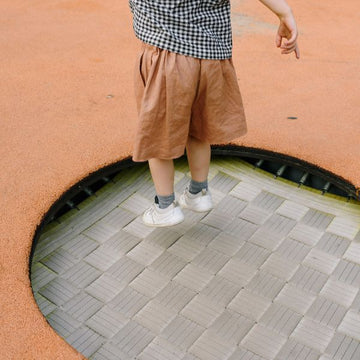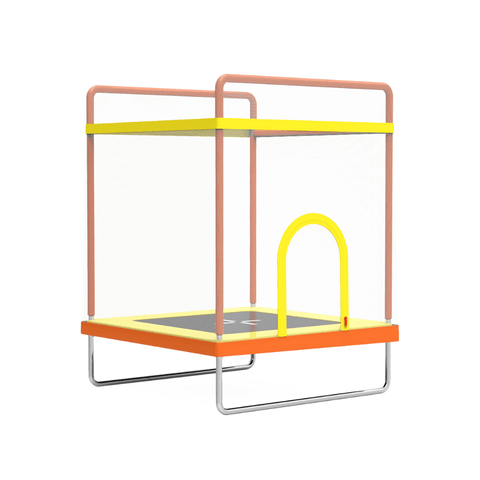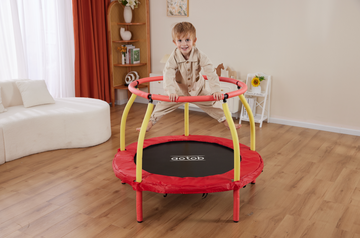Autism, formally referred to as autism spectrum disorder (ASD), is a complex and pervasive developmental condition marked by varying degrees of speech impairment, challenges in interpersonal interactions, narrow interests, and repetitive behaviors. On December 3, 2021, the Centers for Disease Control and Prevention reported a prevalence rate of up to 3.2% for ASD, indicating that one in every 44 children is now identified with this condition. This underscores the increasing importance of dedicating efforts to enhance the quality of support and interventions for children with ASD.

Research has shown that trampolining can help ASD kids with in a variety of ways, such as enhancing perceptual skills and motor development, reducing anxiety, stabilizing moods, and promoting better sleep patterns.
1. Enhance Perceptual Skills:
Many ASD children will feel calm when doing simple repetitive movements, making jumping a crucial component of their early development. Trampolining and repetitive jumping support the replacement of vestibular sensory integration, fostering limb coordination and hand-eye integration.
2. Enhanced Exercise Skills:
Trampolining, as a low-impact sport, minimizes the risk of joint injuries during physical activity. A study titled "The Effects of a Trampoline Intervention on Motor Performance and Balance in Children with Intellectual Disabilities" revealed that children participating in a 12-week trampoline intervention program experienced enhancements in balance, motor skills, and overall enjoyment and motivation.
3. Promotes Better Sleep:
Trampolining aids in expending excess energy, facilitating quicker sleep onset (as indicated in this study) and improved sleep quality. Furthermore, research from the University of Konstanz, Germany (detailed here), suggests that the engagement of new motor skills through trampolining can extend sleep cycles, enhance REM sleep, and increase slow-wave sleep duration.
4. Anxiety Relief:
Trampoline exercise can help people with ASD and sensory disorders to relieve anxiety. Trampoline jumping is a rhythmic form of exercise that relieves stress and depression to some extent, and the exercise stimulates dopamine secretion to bring about happy emotions.
5. Enhance Physical Fitness:
Research shows that jumping for 10 minutes is equivalent to jogging for 30 minutes. Trampoline jumping can promote the circulation of blood, lymphatic fluid and various body fluids throughout the body, and trampoline can prevent and reduce diseases. For example, it can enhance cardiopulmonary function, balance blood pressure, improve body coordination, help sleep, and improve the function level of the central nervous system, circulatory system and digestive system.
Precautions:
When using a trampoline must pay attention to the safety of the user. First, it is best to choose a trampoline with a net to protect your child from falling off the trampoline. Secondly, children should be supervised by an adult when using the trampoline.
Recommend Trampolines for Little Kids:
Recommend Outdoor Trampolines:
 |
 |
 |










